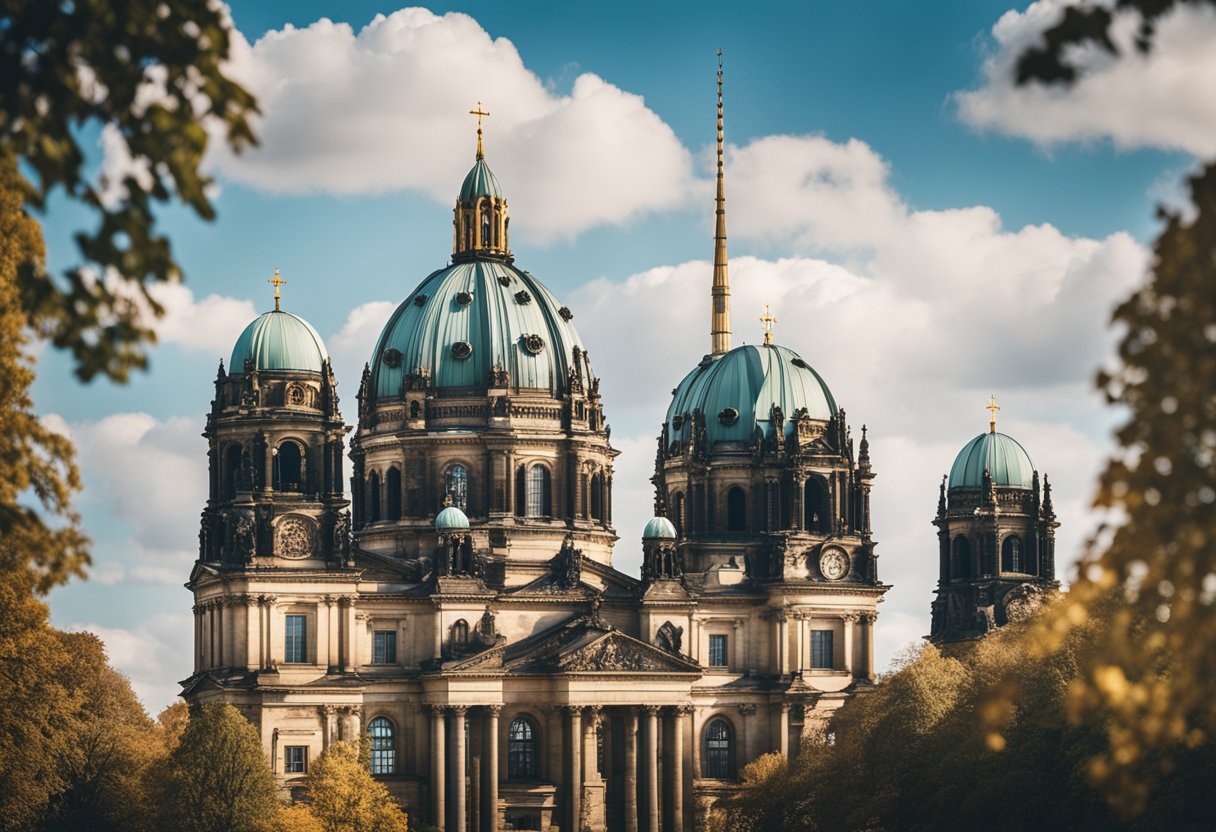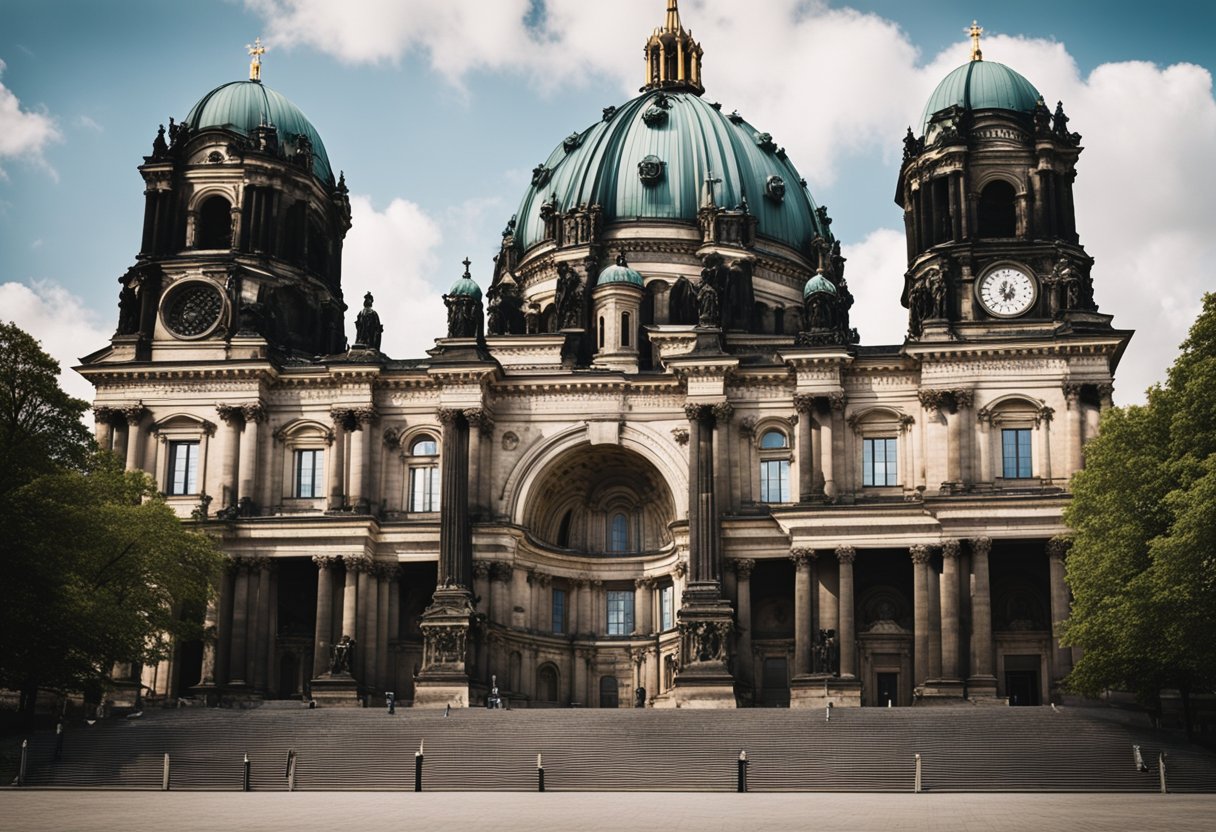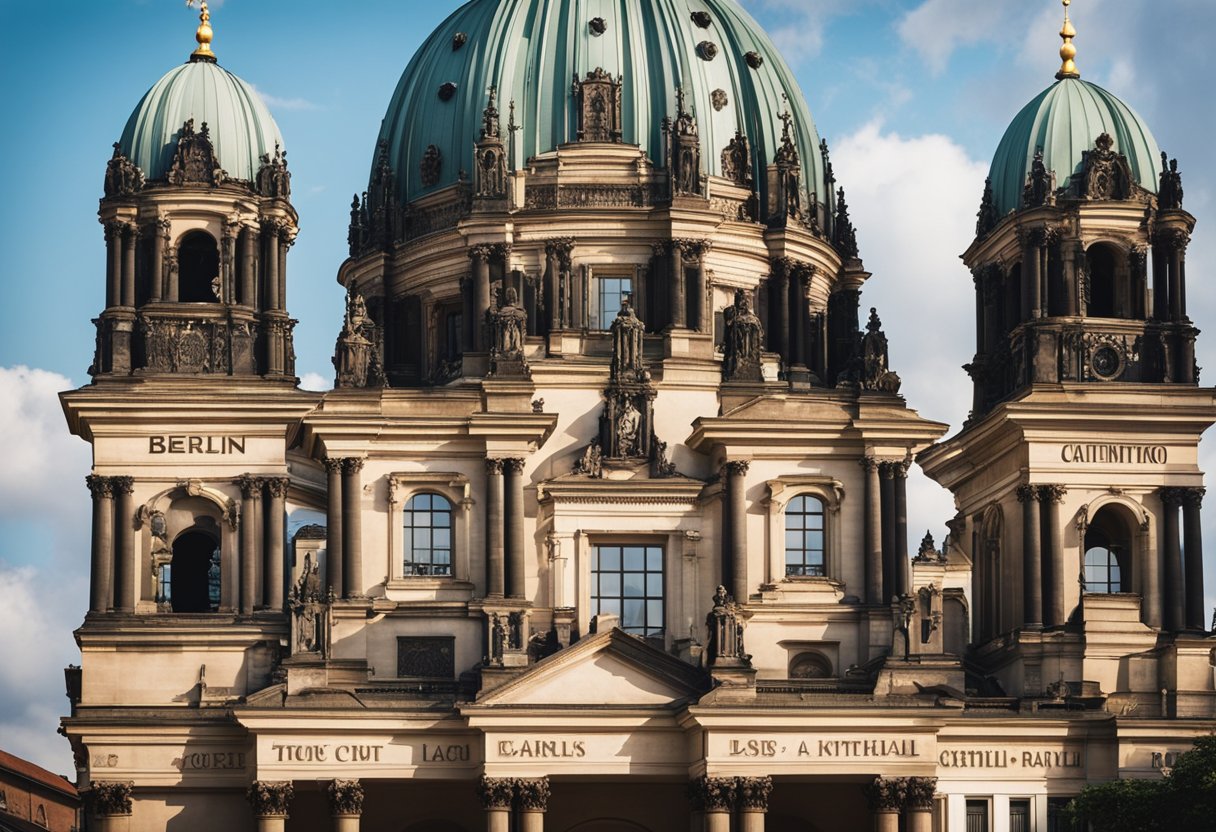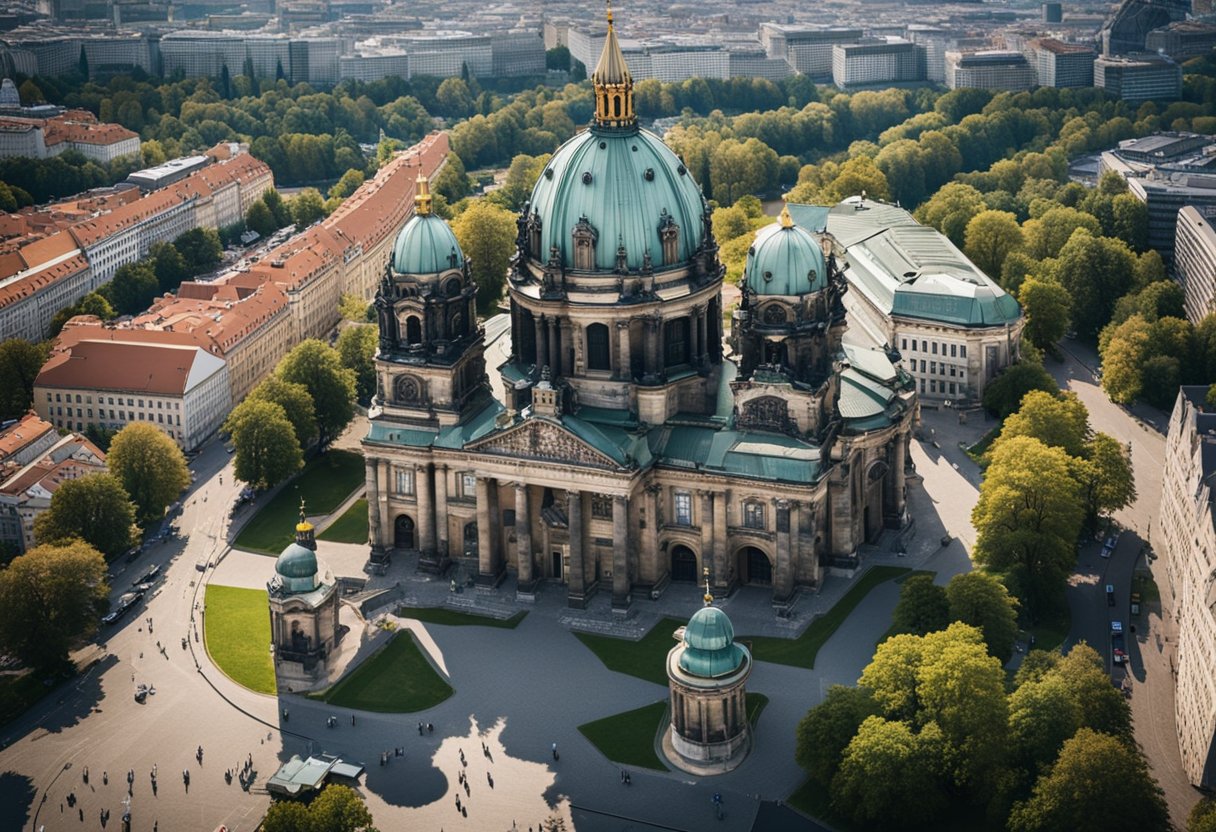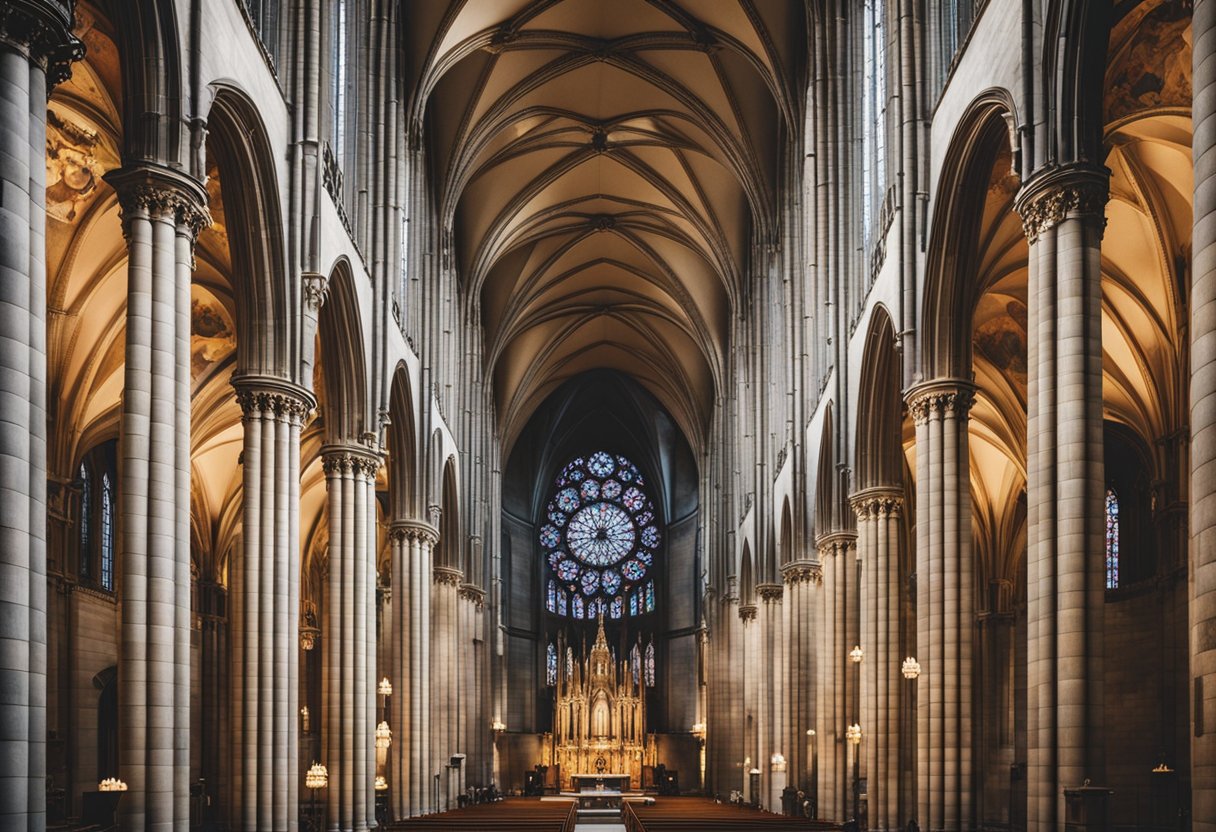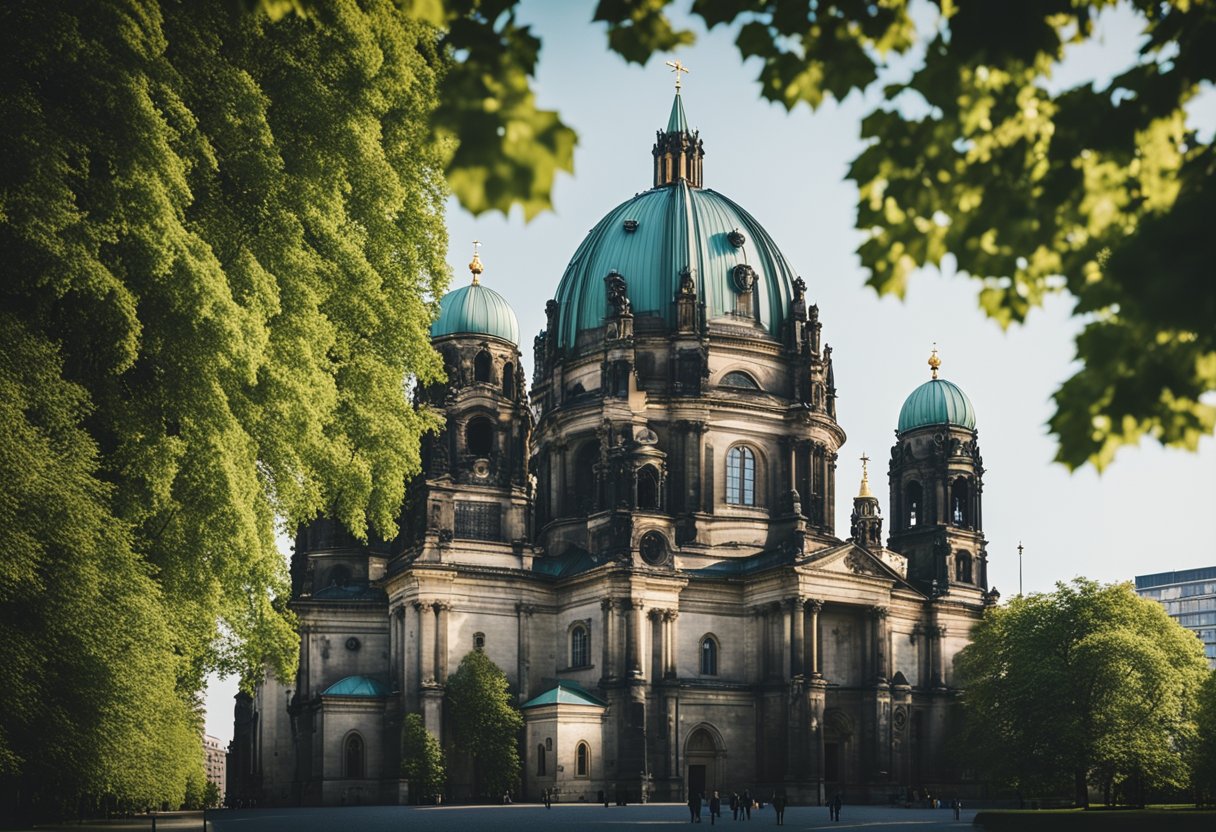Berlin, the vibrant capital of Germany, is a city deeply enriched with history and architecture. Within the heart of Berlin lies Berlin Cathedral, a monumental building with a storied past that traces back to the 15th century.
Despite its grandeur and significance, it is not the Oldest Cathedral in Berlin; that title belongs to St. Nicholas’ Church, which dates back even further.
St. Nicholas’ Church, known as Nikolaikirche in German, is indeed the oldest church in Berlin. Founded in the 13th century, it stands in the city’s historic Nikolaiviertel district. The edifice has witnessed numerous modifications throughout the centuries and serves as a testament to Berlin’s rich religious heritage.
While Berlin Cathedral, with its imposing dome and splendid interior, might dominate the skyline and capture the attention of visitors, it is the humble St. Nicholas’ Church that holds the narrative of time, surviving through ages as the city’s most ancient ecclesiastical building.
Berlin’s religious landscape showcases an intricate tapestry of history, with each cathedral and church contributing to the city’s collective memory.
Historical Significance – Oldest Cathedral in Berlin
The oldest church in Berlin is the St. Nicholas Church, soaked in history and playing a pivotal role in the city’s religious landscape since the Middle Ages.
Origins and Development
St. Nicholas Church, founded during the Middle Ages, established its presence in Berlin’s fabric as the city itself was developing. Originally a Roman Catholic institution, the church transitioned to a Protestant place of worship following the Reformation, reflecting the significant religious and social changes sweeping across Europe at the time.
Key Religious Events
Throughout its history, St. Nicholas Church has been a cornerstone for key religious events, especially during the Reformation period in Brandenburg. It was an essential venue for cultivating the Protestant faith within the region, thereby influencing the religious orientation of Brandenburg and beyond.
Impact of Wars
The two World Wars left indelible marks on Berlin’s oldest church. Though substantially damaged during World War II, the church has since been restored, symbolizing resilience and preservation. It now stands as a monument to the city’s endurance through the turmoil of wars and its importance to the Protestant Church in Germany.
Architectural Details
Berlin Cathedral, with its rich history and blend of architectural styles, provides a physical narrative of the city’s evolution. Its architectural details offer insights into periods that have influenced its design and construction.
Design Evolution
The Berlin Cathedral, originally constructed in the 15th century, has undergone several design evolutions, reflecting various architectural styles. The initial structure showcased Brick Gothic features, typical of Northern European churches at the time.
In the early 19th century, Prussian architect Karl Friedrich Schinkel influenced the transformation with Neoclassical elements. Finally, under the supervision of architect Julius Carl Raschdorff, the cathedral was dramatically redesigned in the late 19th century in the Baroque Revival style, which ultimately defined its current grandeur.
Restorations and Modernization
Following significant damage in World War II, the Berlin Cathedral underwent restoration, preserving and modernizing its architectural integrity. Modern technology has been employed to maintain the cathedral’s structural stability while staying true to its historical fabric.
The restoration efforts ensured that the cathedral’s splendor was not only resurrected but also equipped to stand the test of time.
Notable Features
The most striking feature of Berlin Cathedral is the high dome, an iconic element of Baroque architecture. A defining characteristic of the Baroque influence is the richly decorated façade featuring elaborate sculptures.
The cathedral’s imposing main front faces the Lustgarten Park and is further accentuated by a granite staircase, demonstrating the grandiosity typical of Renaissance architecture. The lavish interior, including the intricate stained glass windows and the elaborate pipe organ, adds to the cathedral’s notable features and underscores its architectural significance.
Cathedral Complex
The oldest church in Berlin is the St. Nicholas Church, renowned for its extensive history and remarkable architecture. This section explores the distinct features that comprise the cathedral complex, including the cathedral’s crypts and tombs, its impressive towers and domes, and the meticulously maintained gardens and surrounding areas that together provide an insight into its historical significance.
Crypts and Tombs
The cathedral complex houses the Hohenzollern Crypt, which is considered one of the most important dynastic tombs in Europe. This crypt contains a collection of elegantly crafted sarcophagi, encapsulating centuries of history and serving as the final resting place for members of the Hohenzollern family.
Towers and Domes
Above ground, the cathedral’s architecture is defined by its towering edifices and ornate domes. The central dome is adorned with meticulous mosaics, which captivate visitors with their intricate designs and religious iconography. The upper levels, accessible via the tower, offer panoramic vistas of the city, including views of the nearby Lustgarten.
Gardens and Surrounding Areas
Encircling the cathedral, the Lustgarten provides a serene green space in contrast to the urban landscape. Graceful paths and plantings showcase the thought given to the cathedral’s external environment, creating a peaceful ambiance for reflection.
Religious and Cultural Role
Berlin’s oldest church, the St. Nicholas Church, has been a cornerstone of the city’s spiritual life and has served multiple roles in its community over the centuries. As a site of worship and cultural congregation, the church has upheld various functions and hosted a multitude of events beyond its core religious practices.
Church Functions
The St. Nicholas Church predominantly functions as a place of worship for the local community. Characterized by its Protestant heritage, it conducts regular sermons and masses in accordance with Protestant liturgy.
It is a part of Berlin’s spiritual landscape, representing the Evangelical Supreme Parish and Collegiate Church, which plays a major role in the city’s Protestant religious life.
Community and Cultural Events
Apart from religious services, St. Nicholas Church has been an important venue for community and cultural events. The church’s acoustics and ambience make it a sought-after location for concerts, particularly those of classical music.
Moreover, it has been a witness to various state ceremonies reflecting its integral position in Berlin’s rich historical tapestry. These events underscore the church’s dual role as a sacred space and a cultural hub, contributing to both the spiritual and cultural dimensions of the community it serves.
Prominent Personalities
The oldest cathedral in Berlin has seen the influence of various prominent figures, ranging from royal patrons to creative architects and artists, each leaving their indelible mark on its historical and architectural legacy.
Royal Patronage
The Berlin Cathedral’s history is intricately linked to the Hohenzollern dynasty, especially figures like Elector Joachim II and Emperor Wilhelm II.
Elector Joachim II, who was instrumental in the introduction of the Protestant Reformation to Brandenburg, is known for his support of church construction, which set a precedent for his successors. Emperor Wilhelm II, the last German Emperor, played a pivotal role in the cathedral’s last major reconstruction, exemplifying the family’s continuous patronage.
Architects and Artists
The cathedral owes much of its splendor to the architects and artists who brought it to life. Frederick I commissioned the reconstruction of the church in the Baroque style, a task that was realized by the architect Johann Arnold Nering.
Christian Daniel Rauch, a celebrated neoclassical sculptor, contributed his art to the cathedral, leaving behind works that still resonate with visitors today. Renowned for creating monuments and sculptures, Rauch’s contributions to the cathedral underscore the importance of artistic expression in ecclesiastical architecture.
Tourism and Accessibility
Berlin’s oldest cathedral, the Marienkirche, not only embodies historical significance but also offers visitors a blend of accessibility and cultural enrichment. The church is situated in the heart of Berlin-Mitte, near major attractions such as Museum Island and the iconic TV Tower, making it a convenient stop for tourists exploring the city’s rich heritage.
Visitor Information
- Opening Hours: The Marienkirche welcomes visitors throughout the week, offering regular services and the opportunity for visitors to admire its historic architecture and artworks.
- Tours: Guided tours provide deeper insights into the church’s past and its role in Berlin’s history.
- Accessibility: The cathedral is accessible to visitors with limited mobility, with features designed to accommodate a wide range of physical needs.
Public Transportation Access
Berlin’s efficient public transport network makes it easy to reach the cathedral:
- Bus: Multiple bus routes stop near Marienkirche, providing straightforward access from various parts of the city.
- Tram: Trams offer a scenic route to the church, with stops conveniently located at Alexanderplatz, a short walk from the cathedral.
- Metro: For those arriving by metro, the church is just a brief walk from stations serving the heart of Berlin-Mitte.
Access to the Marienkirche allows visitors to explore one of Berlin’s historical treasures amidst the convenience and vibrancy of the city’s central district.
Cathedral in Context
Exploring the historical tapestry of Berlin’s religious architecture reveals the St. Nicholas Church, also known as Nikolaikirche, as its oldest cathedral and church.
Comparison with Other Berlin Churches
Nikolaikirche stands apart in Berlin’s history as the oldest church in the city, having established its presence in the borough of Mitte, the heart of Central Berlin. It represents the origin from which other significant churches, such as St. Mary’s Church (Marienkirche) and St. Hedwig’s Cathedral, emerged.
Unlike Nikolaikirche, St. Mary’s Church plays an equally vital role, yet it came later, serving as the second oldest, showing a progression of ecclesiastical architecture. St. Hedwig’s Cathedral contrasts these older churches by exhibiting an 18th-century Roman Catholic form, underscoring Berlin’s diverse religious expressions.
The Cathedral in Greater Berlin
While Nikolaikirche is cherished in East Berlin as a symbol of the city’s medieval roots, its significance spreads throughout Greater Berlin. St. Hedwig’s Cathedral enriches the city’s panorama not only spiritually but also culturally, as it represents the first Roman Catholic church built after the Protestant Reformation.
These churches are more than places of worship; they are monuments that narrate Berlin’s history. Through their distinct styles, from Gothic to Baroque, they echo stories from different eras, making each a unique chapter in the grand narrative of Berlin.
Conservation and Future Outlook
The St. Nicholas Church, recognized as the oldest church in Berlin, warrants dedicated preservation efforts. Steeped in history, this landmark not only serves as a vessel for Berlin’s past but also as a point of cultural and architectural significance.
The conservation strategies implemented by the church’s administrators aim to protect and maintain the integrity of this centuries-old structure.
Restoration efforts are ongoing to ensure that the physical fabric of the building remains stable and aesthetically resonant of its historical backdrop.
The Evangelical Church of Berlin-Brandenburg-Silesian Upper Lusatia, responsible for many Protestant churches in the area, often oversees these restorative processes, demonstrating their commitment to heritage and community history.
The Union of Evangelical Churches plays a role in consolidating support for such conservation projects. These institutions often help provide the necessary guidance and financial backing needed to undertake the meticulous work of restoration.
- Key Points of Conservation:
- Structural Integrity: Reinforcement of the building’s framework.
- Aesthetic Preservation: Restoration of original designs and artworks.
- Accessibility Upgrades: Installation of modern provisions for visitor access without compromising historical authenticity.
In regards to future outlook, these bodies are key in advocating for the continual investment in the church’s preservation.
They collaborate with heritage professionals to adapt the church to modern-day requirements while retaining its historical essence. The community is deeply involved in the conversation as well, bearing witness to the ongoing transformation of their beloved monument.
By striking a balance between conservation and the needs of a living heritage site, the future of the St. Nicholas Church in Berlin is one of careful stewardship and respectful innovation.
Frequently Asked Questions
Exploring Berlin’s religious heritage brings attention to the city’s oldest cathedrals and churches, with an emphasis on their historical significance and architectural splendor.
Which cathedral is considered the earliest built in Berlin?
The oldest cathedral in Berlin is the St. Hedwig’s Cathedral, though the Berlin Cathedral (Berliner Dom) often garners attention due to its monumental size and prominent location on Museum Island.
What is the history behind Berlin’s ancient churches?
Berlin’s ancient churches reflect a tapestry of historical periods; for example, the St. Mary’s Church, Berlin’s oldest parish church, dates back to the 13th century, embodying the city’s medieval roots juxtaposed with modern developments.
How can one identify the oldest structures within Berlin?
The oldest structures in Berlin can be identified by their architectural styles, with many featuring Gothic elements typical of the Middle Ages, and by historical records detailing their construction dates and subsequent renovations.
What are some historical religious sites in Berlin for tourists to visit?
Notable historical religious sites in Berlin include the Kaiser Wilhelm Memorial Church, which stands as a poignant war memorial, and the St. Nicholas’ Church, the oldest church in Berlin, offering insights into the city’s past.
In what ways does Berlin’s oldest cathedral reflect its past?
Berlin’s oldest cathedral, St. Hedwig’s, reflects the city’s past through its baroque architecture and as a symbol of Catholic presence, representing faith’s endurance amidst Berlin’s turbulent history.
Which church in Berlin is historically significant for its age and architecture?
The St. Nicholas’ Church in Berlin is historically significant, serving as the city’s oldest standing building and showcasing a blend of architectural styles from Baroque to Gothic, telling the story of Berlin’s evolution over the centuries.
